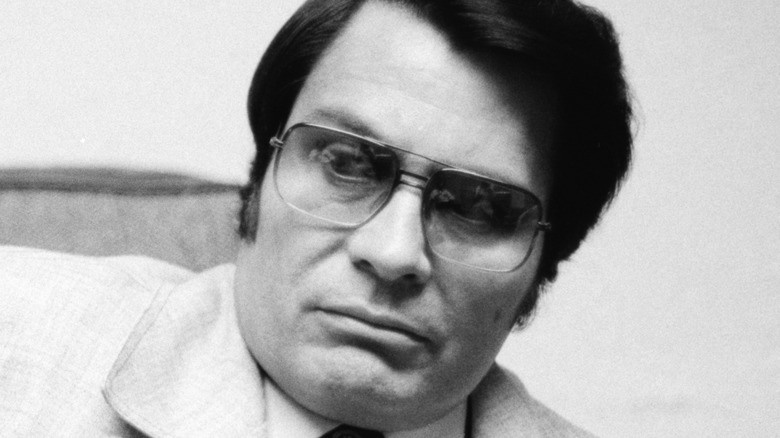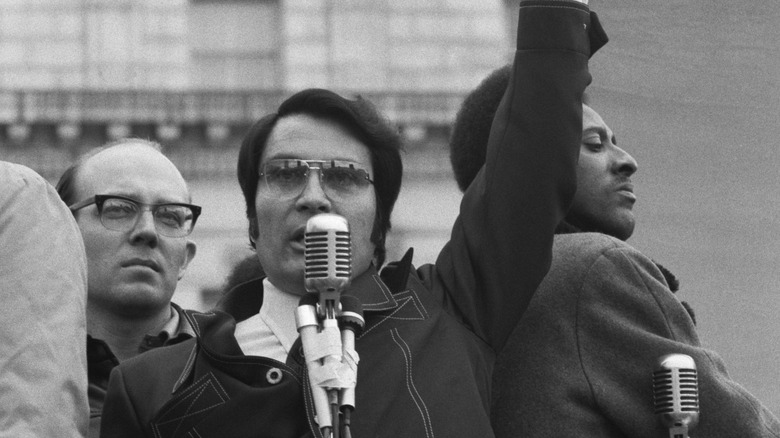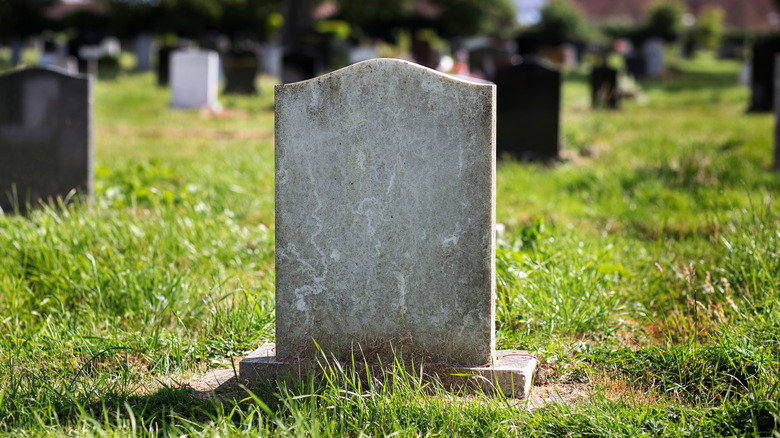Disturbing Details Found In Jim Jones' Autopsy Report
Cult leader Jim Jones was responsible for what the Houston Press noted was the largest non-natural loss of life of U.S. citizens until the 9/11 attacks in 2001. According to The Atlantic, the mass murder-suicide he orchestrated in Jonestown, the commune his Peoples Temple founded in Guyana in the late 1970s, resulted in the deaths of 918 people, a third of them children. Teri Buford O'Shea, a member of the Peoples Temple who fled the commune just weeks before the event, said that the cult leader conducted suicided drills that he called "white nights," in which he would trick his followers into believing that Black people were being herded into concentration camps in the United States and that U.S. agents were on their way to Guyana to kill them. He even had people fire guns in the jungle and shoot actors with rubber bullets to add a sense of realism.
That fateful night in 1978 began similarly to other white nights, but this time, it was no drill. Jones convinced the majority of his followers to ingest a deadly poison by means of false claims that the U.S. government was coming to kill them. Armed guards took care of any who refused. The Washington Post reports that Jones left behind an audio recording of the group's final moments, in which his followers can be heard wailing in pain, some even arguing with him about the necessity of the mass murder-suicide. Weeks later, his autopsy report would also reveal disturbing details about the final moments of Jim Jones and his unfortunate followers.
Jim Jones didn't wait to die painfully by cyanide poisoning
He may have had his followers drink Flavor-Aid laced with cyanide, and give it to their unwitting children, but Jim Jones opted for a different method of suicide for himself. And dying from cyanide poisoning is no walk in the park. A&E's True Crime Blog notes that the process is extremely painful and drawn-out. Cyanide causes excruciating convulsions, uncontrollable vomiting, bleeding, and other torturous effects, and the process can take up to 20 minutes or more. Jones ranted about dying "with dignity" while children and babies writhed in pain, then he took a quick and easy way out.
According to The New York Times, his autopsy report revealed that he had died from a gunshot wound to the head. A specialist who examined the body said that it was highly likely that Jones' wound was self-inflicted. However, the same could not be said about a nurse in the cult named Anne Elizabeth Moore. The doctors were able to tell that she had been shot from point-blank range, but the advanced state of decomposition of the body by the time they made their examination and other factors made it impossible to tell if she had committed suicide or been murdered.
One forensic pathologist from Guyana said that his examination of Jones' body in that country led him to suspect that the cult leader had been murdered. However, the results of the official autopsy performed in the United States — that Jones most likely committed suicide — have been widely accepted as the official explanation.
The Jonestown massacre haunted first responders for years
The Jonestown massacre took place on November 18, 1978. According to Time magazine, the U.S government was hoping to be able to bury the more than 900 bodies on site and be done with the whole ordeal, but this event was obviously not going away that easily. The Guyanese government wanted nothing to do with the mess the misguided group of Americans had made in the jungle. Neither were the victims' surviving family members on board. So members of the military were sent to Jonestown to recover the bodies, and their stories of what they saw there were horrifying. The Air Force later carried out a study of the traumatic effects of what those first responders witnessed there. "It is difficult to convey to someone," reads the study's preface, "what a week in a tropical environment can do to a [dead] human body." First responders told investigators that the smell alone was "beyond imagination."
Recovery workers described not being able to sleep at night. Others responded with anger that the U.S. military was dealing with such "fanatics" in the first place. Still, others found they couldn't help but feel compassion. "You've got to give a damn," said one first responder. The effect of tasks like filling body bags with several baby corpses was so profound that the study considered the recovery workers "secondary disaster victims." They are still haunted by the memories of the Jonestown massacre more than 40 years later.


